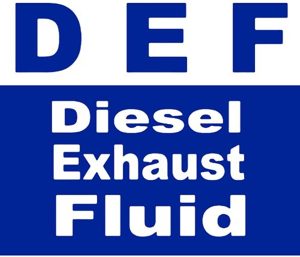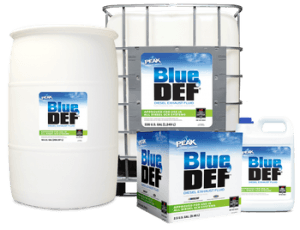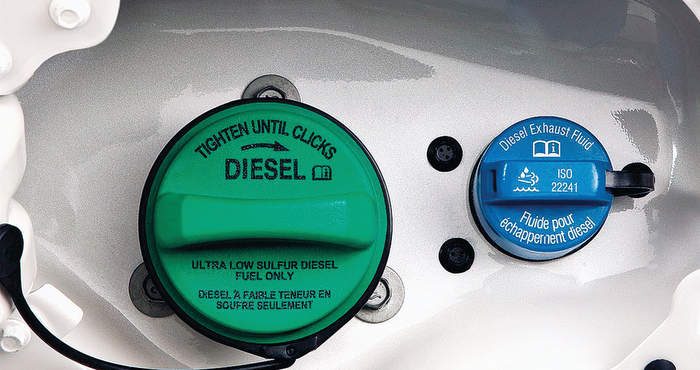DEF Fluid Disposal Methods: A Comprehensive Guide to Efficient Handling
Diesel Exhaust Fluid (DEF) is a crucial component in reducing harmful emissions from diesel engines. Proper disposal of DEF fluid is essential to prevent environmental damage and ensure regulatory compliance. This article explores the most efficient methods for disposing of DEF fluid.

Diesel Exhaust Fluid (DEF) is a crucial component in reducing harmful emissions from diesel engines.
What we will address below:
- Appropriate Storage of DEF Fluid
- Proper Handling and Use of DEF Fluid
- Making Use of Recycling Centers
- Spill Containment and Cleanup Procedures
- Compliance with Regulatory Guidelines
- Disposal of DEF Containers
- Resources for Safe and Responsible DEF Disposal
+ Expanded Info on Storage, Handling & Disposal
Enjoying our insights?
Subscribe to our newsletter to keep up with the latest industry trends and developments.
Stay InformedStoring DEF Fluid Appropriately
Proper storage of DEF fluid is the first step in ensuring efficient disposal. DEF fluid should be stored in a cool, dry place away from direct sunlight, as exposure to heat and light can cause it to degrade. Additionally, it’s essential to keep the fluid in its original container or a container specifically designed for DEF storage to avoid contamination.
Proper Handling of DEF Fluid
When handling DEF fluid, it’s crucial to follow safety guidelines, including wearing protective gear such as gloves and goggles, to prevent accidental spills or exposure. In case of a spill, immediate containment and cleanup are necessary to minimize any potential harm to the environment or individuals.
Utilizing Recycling Centers
One of the most efficient DEF fluid disposal methods is taking it to a recycling center. Many recycling centers accept used DEF fluid and process it according to regulatory guidelines. To locate a recycling center near you, visit Earth911 for a comprehensive list of facilities.
Spill Containment and Cleanup

Compliance with local, state, and federal regulations is crucial when disposing of DEF fluid.
In the event of a spill, having a spill containment kit on hand is essential for efficient cleanup. The kit should include absorbent materials, such as pads or granules, to soak up the fluid, and a sealable container for disposing of the used materials. For larger spills, contact a professional environmental cleanup service like Clean Harbors to ensure proper handling and disposal.
Adhering to Regulatory Guidelines
Compliance with local, state, and federal regulations is crucial when disposing of DEF fluid. Familiarize yourself with the guidelines and procedures for your area to ensure that you’re adhering to the necessary standards. For more information on regulations, visit the Environmental Protection Agency (EPA) website.
Disposing of DEF Containers
Proper disposal of DEF containers is just as important as the fluid itself. Empty containers should be triple-rinsed and either reused or taken to a recycling center for proper disposal.
Resources for DEF Disposal
For more information on DEF fluid disposal methods, visit the Environmental Protection Agency (EPA) website or your local waste management authority. Additionally, Tank Transport offers valuable resources on proper handling, storage, and disposal of DEF fluid.
In conclusion, proper DEF fluid disposal is essential for maintaining environmental safety and ensuring regulatory compliance. By following these efficient methods, you can contribute to a cleaner, healthier environment while avoiding potential fines or penalties.
Expanded Info Below On DEF Fluid Storage, Handling & Disposal
Storing DEF Fluid Appropriately: Additional Tips
In addition to keeping DEF fluid in a cool, dry place away from direct sunlight, it is also essential to ensure proper ventilation in the storage area. This helps prevent the buildup of ammonia gas, which can be hazardous. Be sure to also check the expiration date on the DEF fluid container, as expired fluid can lose its effectiveness and may not meet emission reduction standards. To maintain the quality of DEF fluid, avoid storing it near combustible materials, strong acids, or alkalis.
Proper Handling of DEF Fluid: Best Practices

When transferring DEF fluid from one container to another or when filling equipment, use dedicated funnels, pumps, or hoses specifically designed for DEF handling.
When transferring DEF fluid from one container to another or when filling equipment, use dedicated funnels, pumps, or hoses specifically designed for DEF handling. This helps prevent contamination from foreign substances that could compromise the fluid’s effectiveness. It’s also a good practice to periodically inspect your DEF handling equipment for wear, leaks, or damage, as these issues can lead to spills or contamination.
Training and Safety Measures
Educating staff members on the proper handling, storage, and disposal of DEF fluid is crucial in preventing accidents and maintaining compliance with regulations. Provide training on safety procedures, personal protective equipment (PPE) usage, and emergency response protocols. This helps ensure that employees are well-prepared to handle any incidents related to DEF fluid.
Utilizing Recycling Centers: Additional Considerations
When disposing of DEF fluid at a recycling center, it is important to properly label and transport the fluid according to local regulations. Proper labeling helps recycling centers identify the contents and handle them accordingly. Additionally, ensure that you have a record of the amount and type of DEF fluid being disposed of for reporting purposes, if required by your jurisdiction.
On-site Treatment and Disposal
For businesses that generate large volumes of used DEF fluid, investing in on-site treatment and disposal systems may be a viable option. These systems are designed to neutralize and safely dispose of DEF fluid according to regulatory guidelines. Consult with an environmental engineering firm or waste management service provider to determine the feasibility and cost-effectiveness of implementing an on-site DEF fluid treatment system.
Developing a DEF Fluid Management Plan
To streamline the handling and disposal of DEF fluid, consider developing a comprehensive management plan. This plan should include detailed procedures for storage, handling, spill response, and disposal, as well as staff training and regular equipment maintenance schedules. A well-organized DEF fluid management plan not only ensures compliance with regulations but also promotes environmental stewardship and employee safety.
About Diesel Exhaust Fluid (DEF)

DEF is specifically designed to aid in reducing harmful nitrogen oxide (NOx) emissions produced by diesel engines.
Diesel Exhaust Fluid (DEF) is a non-hazardous solution comprised of 32.5% urea and 67.5% deionized water. It is specifically designed to aid in reducing harmful nitrogen oxide (NOx) emissions produced by diesel engines. DEF is used in Selective Catalytic Reduction (SCR) systems, a technology commonly found in modern diesel-powered vehicles and equipment.
When injected into the SCR system, DEF reacts with the NOx emissions, breaking them down into harmless nitrogen and water vapor. This process significantly decreases the harmful pollutants released into the atmosphere and helps diesel engines comply with stringent emission regulations.
As an essential component for reducing emissions, it is crucial to handle and dispose of DEF fluid properly. Implementing efficient disposal methods, such as proper storage, utilizing recycling centers, and adhering to regulatory guidelines, ensures minimal environmental impact and regulatory compliance.




















